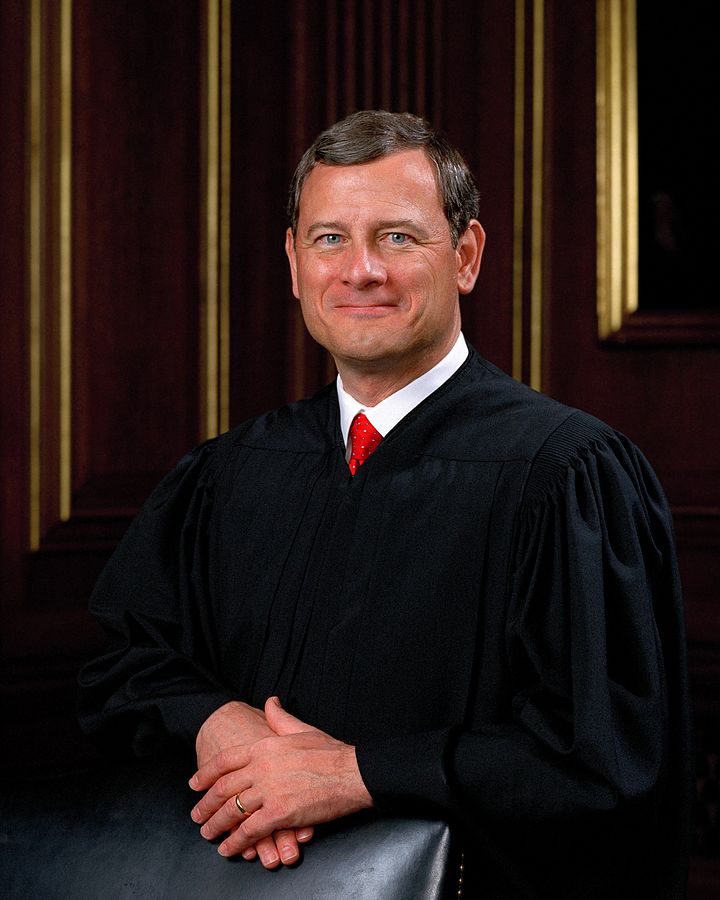American News
Supreme Court’s Roberts is the new man at the ‘centre’

FILE: Chief Justice John Roberts is the Supreme Court’s new man in the middle. It’s just that the middle may have moved well to the right. (Photo By Steve Petteway, Public Domain)
WASHINGTON — Chief Justice John Roberts is the Supreme Court’s new man in the middle. It’s just that the middle may have moved well to the right.
The retirement of Justice Anthony Kennedy means Roberts probably will be the conservative justice closest to the court’s four liberals, allowing him to control where it comes down in some of its most contentious cases.
Roberts will be the justice who determines “how far they go and how fast they go,” said Washington lawyer John Elwood.
Kennedy played a similar role for many years — his votes on gay rights, abortion, the death penalty, the environment, voting rights and affirmative action basically determined the outcome of cases on which the court was divided between liberals and conservatives.
Roberts has typically been to Kennedy’s right. He did not endorse a constitutional right to marry for same-sex couples. He dissented when the court struck down Texas abortion clinic restrictions in 2016. The chief justice also was in dissent from the court’s first major climate change decision in 2007, when it held that the Environmental Protection Agency could regulate emissions of carbon dioxide and other greenhouse gases as air pollutants.
New cases on any of those issues could be before the court soon and, even if Roberts is not prepared to overrule major Supreme Court precedents, he could be in position to cut back on environmental protections as well as gay rights and abortion rights.
Smaller steps might be in keeping with Roberts’ preference for avoiding major divides where possible, and attracting votes from both conservatives and liberals. The 63-year-old chief justice may be in no hurry to move quickly, as he could be on the bench another 15 to 20 years.
“Chief Justice Roberts, more than any other justice on the court, believes in narrow rulings that attract broad majorities, answering no more than necessary to resolve a given case,” Jonathan Adler, a professor at the Case Western Reserve University School of Law, wrote on the Volokh Conspiracy legal blog.
In one sense, the Supreme Court’s immediate future could look a lot like the term that just ended. Roberts seemed firmly in control of a court that overwhelmingly went conservative in divided cases, including upholding President Donald Trump’s travel ban, striking a blow at public-sector labour unions, limiting workers’ rights to band together to complain about pay and affirming Ohio’s aggressive efforts to purge its voting rolls.
Only on one occasion did Roberts join with the liberal justices in a 5-4 decision, a ruling that said police generally must have warrants to get telecommunications companies’ records showing where people have used their cellphones.
Twice, though, Roberts was among a larger grouping of justices in cases that skirted the big issue at stake, but that could return to the court. In one case, the justices rejected a lower-court ruling that set limits on redistricting for partisan gain, but without deciding whether limits ever could be imposed. In another, the court ruled in favour of a baker who would not create a wedding cake for a same-sex couple, yet left on the table the question of whether religious objections could be used to avoid complying with anti-discrimination laws that protect LGBT people.
For all his votes on the conservative side of issues, Roberts has had his critics on the right. They include Trump, who once labeled Roberts “an absolute disaster” for the chief justice’s critical vote to uphold the Affordable Care Act in 2012. Trump has not publicly criticized Roberts since he’s been president.
The case arose in the middle of the 2012 presidential campaign, in which Barack Obama was seeking re-election and the health care law also known as “Obamacare” was a major issue. Then, as now, the five conservatives were nominees of Republican presidents, while the four liberals were chosen by Democrats.
In the end, Roberts sided with the liberals, a decision some court observers have attributed in part to concern about public perceptions of the court and the chief justice’s desire to be seen as above the political fray.
“He’s conservative, but he is an institutionalist. He believes deeply in the Supreme Court,” said George Washington University law professor Jonathan Turley.
A test of Roberts’ ability to set the court’s agenda could come on the topic of guns, said UCLA law professor Adam Winkler.
Roberts voted in favour of gun rights in two cases that held that Americans have the right to have guns, at least for self-defence in their homes. But the court has since rejected repeated attempts to expand on the right of gun ownership, in part because Roberts and Kennedy would not join the other conservative justices to take on a new case.
It takes the votes of four justices for the court to agree to review a case. If Kennedy’s replacement is a fourth vote for a new case about guns, then Roberts might soon have to weigh in on issues like the right carry a concealed firearm in public or bans on assault weapons, Winkler said.





















